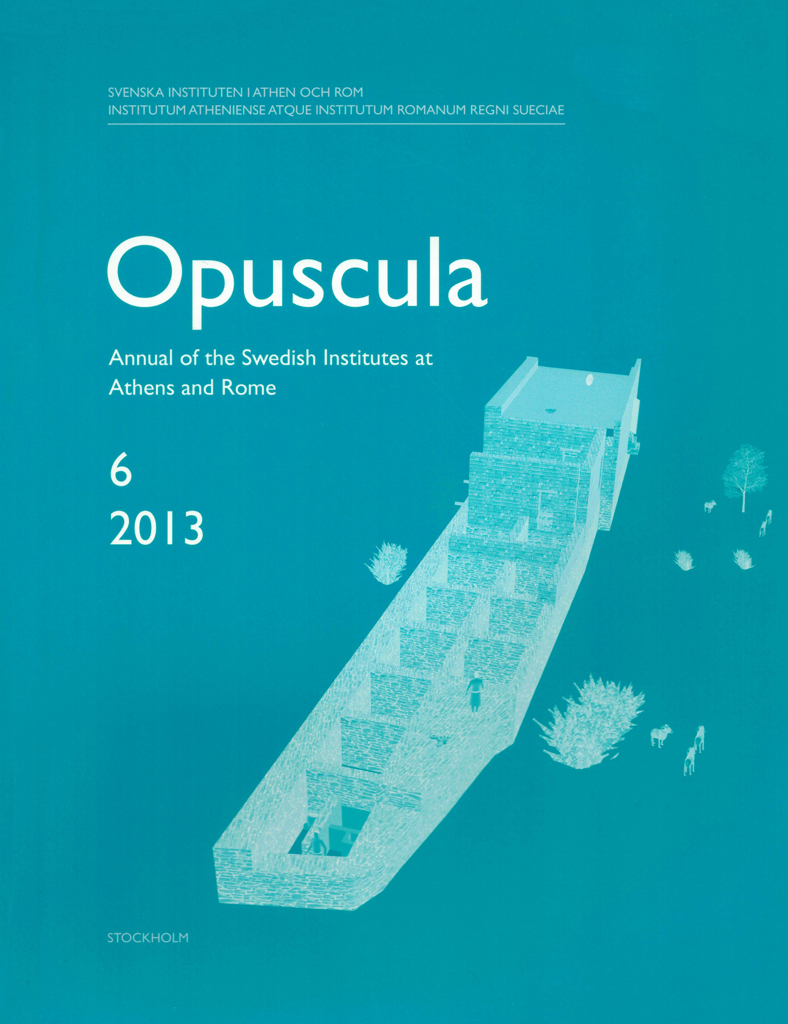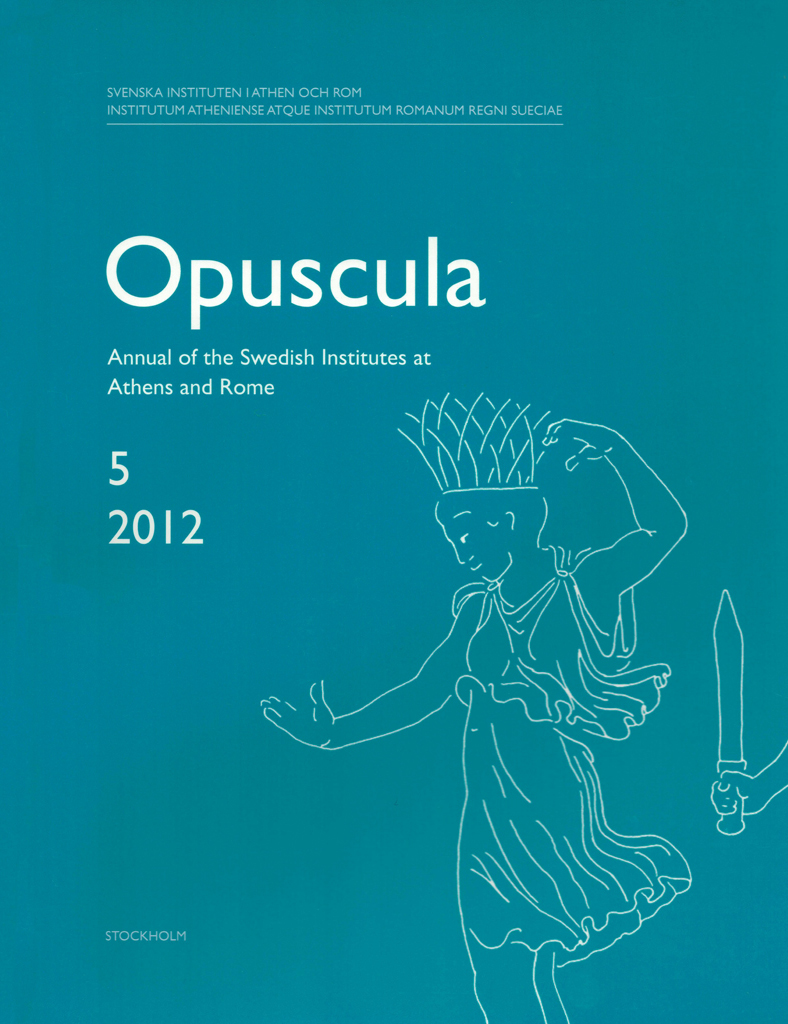Opuscula is published by the Swedish Institutes at Athens and Rome, with the aid of a grant from the Swedish Research Council. Distributed by Eddy.se AB. View journal at ERIH PLUS. All content available with open access. The Swedish Jordan Expedition 2014 at Tall Abu al-Kharaz. Preliminary results from Areas 12 and 13 By Peter M. Fischer & Teresa Bürge Abstract In previous seasons excavations have concentrated on the periphery of the city of Tall Abu al-Kharaz, a multi-period tell in the Central Jordan Valley. Tall Abu al-Kharaz flourished from the Early Bronze to Islamic times, from roughly 3200 BC to the 10th century AD. The main object of the field work in 2014 was to investigate the area around the geographical centre of the city (Area 12). Preference was given to further investigation of the Iron Age sequence, i.e. the period from the 12th to the 7th centuries BC (local Phases IX–XV). Another task was to extend the excavations in the northern part of the city, Area 7, which produced essential information on the Iron Age, towards the south (Area 13) in order to generate a coherent picture of Iron Age occupation in the city’s northern half. Domestic structures…
Opuscula is published by the Swedish Institutes at Athens and Rome, with the aid of a grant from the Swedish Research Council. Distributed by Eddy.se AB. View journal at ERIH PLUS. All content available with open access. The Swedish Jordan Expedition 2013 at Tall Abu al-Kharaz. Preliminary results from Areas 9, 10 and 11 By Peter M. Fischer & Teresa Bürge Abstract The Swedish excavations at Tall Abu al-Kharaz, a twelve-hectare tell in the central Jordan Valley, continued in 2013 in order to shed further light on the Iron Age occupation of this city that was first settled around 3200 BC, corresponding to the conventional Early Bronze Age IB. The Iron Age occupation lasted from the 12th century BC until 732 BC, when the city was conquered by the Neo-Assyrians. From 2009 to 2012, excavations in Area 9 revealed an exceptionally well-preserved two-storey compound dating from Iron Age I (local Phase IX), i.e. around 1100 BC. The stone compound was exposed for a length of 46 m. It consists of 21 rooms, with walls still standing to a height of more than 2 m. Several hundred complete vessels and other objects point to the extensive contacts of a fairly rich…
Opuscula is published by the Swedish Institutes at Athens and Rome, with the aid of a grant from the Swedish Research Council. Distributed by Eddy.se AB. View journal at ERIH PLUS. All content available with open access. The Swedish Jordan Expedition 2011 and 2012 at Tall Abu al-Kharaz. Preliminary results from the early Iron Age occupation in Area 9 By Peter M. Fischer & Teresa Bürge. With contributions by D. Blattner, M. Alrousan & A. Abu Dalo Abstract Tall Abu al-Kharaz, a twelve hectare-large tell in the central Jordan Valley, was occupied for approximately five millennia. In earlier excavation seasons most of the early Iron Age remains were found to have been disturbed by later settlers. Between 2009 and 2012 excavations revealed an extremely well-preserved city quarter dating from around 1100 BC, which represents an essential part of the settlement history of this city. The stone-built architectural compound consists of 21 rooms, with walls still standing to a height of more than 2 m. The inventories of these rooms, which comprised more than 200 complete vessels and other objects, were remarkably intact. Amongst the finds were imports from Egypt and Phoenicia. There were also finds which are associated with the…
Opuscula is published by the Swedish Institutes at Athens and Rome, with the aid of a grant from the Swedish Research Council. Distributed by Eddy.se AB. View journal at ERIH PLUS. All content available with open access. The Swedish Jordan Expedition 2009 and 2010 at Tall Abu al-Kharaz. Preliminary results from the Early Iron Age occupation in Area 9. With appendices by T. Bürge, and A. Gustafsson & J. Azzopardi By Peter M. Fischer Abstract Tall Abu al-Kharaz, in the central Jordan Valley, was occupied during approximately five millennia. A walled town, which had a dominant position in the Jordan Valley, existed already in the Early Bronze Age IB, viz. before 3050 BC. Walled settlements also flourished at the end of the Middle Bronze Age (around 1600 BC), during the Late Bronze Age (roughly 1500–1200 BC) and throughout the entire Iron Age (roughly 1200–600 BC). It is most likely that Tell Abu al-Kharaz is identical with Jabesh Gilead: this city is mentioned frequently in the Old Testament. During earlier seasons most of the Early Iron Age remains were found to have been disturbed by later settlers. It is, therefore, essential for the documentation of the settlement history of this city,…




